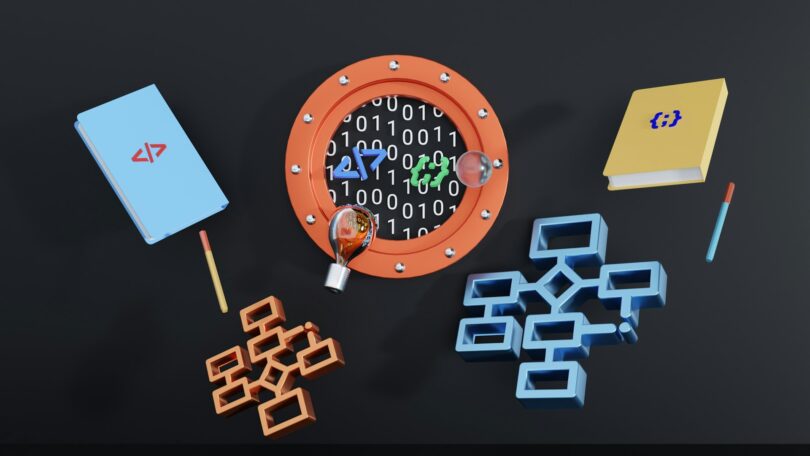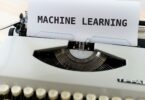Top AI Tools for Data Scientists in 2025
Artificial Intelligence (AI) continues to redefine the landscape of data science AI tools, empowering professionals with tools that enhance productivity, accelerate model development, and streamline data workflows. As we venture deeper into 2025, the proliferation of cutting-edge AI tools has become instrumental in addressing the increasing complexity and volume of data. This article explores the top AI tools for data scientists in 2025, categorized based on their core functionalities: data preprocessing, model development, visualization, deployment, and collaboration.
1. Introduction to AI Tools in Data Science
Data science in 2025 is not just about building models; it’s about managing entire data ecosystems. With advancements in generative AI, AutoML, and integrated development environments (IDEs), tools are now smarter and more intuitive than ever. They automate mundane tasks, improve data quality, and allow data scientists to focus on strategic problem-solving.
The best tools are no longer isolated applications but part of comprehensive platforms that support the entire machine learning (ML) lifecycle.
2. Data Preprocessing and Exploration Tools
2.1. Trifacta by Alteryx
Overview: Trifacta is a powerful data wrangling platform enhanced with AI to automate data cleaning, transformation, and enrichment.
Key Features:
-
Intelligent data profiling
-
AI-suggested transformations
-
Seamless integration with cloud data warehouses (Snowflake, BigQuery)
Why It’s Top in 2025: Trifacta’s machine learning engine understands the context of data and suggests the best transformation steps, saving countless hours in preprocessing.
2.2. Pandas AI
Overview: Pandas AI is an extension of the popular Python Pandas library, now enhanced with generative AI capabilities.
Key Features:
-
Natural language queries for dataframes
-
Auto-suggestions for exploratory data analysis
-
Integration with Jupyter and Streamlit
Why It Stands Out: It allows data scientists to converse with their data using plain English, which is invaluable during the exploratory phase.
3. AI-Powered Model Building and AutoML Platforms
3.1. Google Cloud Vertex AI
Overview: Vertex AI is Google Cloud’s unified platform for ML that now comes with deeply integrated AI services in 2025.
Key Features:
-
Custom and pre-trained models
-
Advanced AutoML capabilities
-
Unified dashboard for MLOps
Latest Enhancements:
-
Generative AI model fine-tuning
-
Natural language code generation
-
Real-time collaboration on notebooks
Why Data Scientists Love It: It drastically reduces model development time by automating hyperparameter tuning and model selection with state-of-the-art performance.
3.2. H2O.ai Hydrogen Torch
Overview: Hydrogen Torch is H2O.ai’s platform for deep learning model training with a no-code interface.
Key Features:
-
Automated neural architecture search
-
Integration with time-series and image data
-
Explainable AI (XAI) features
Why It’s Leading in 2025: Even without writing code, data scientists can build, interpret, and deploy sophisticated deep learning models quickly.
3.3. DataRobot
Overview: A pioneer in AutoML, DataRobot continues to evolve with new generative AI integrations in 2025.
Key Features:
-
End-to-end model lifecycle automation
-
Real-time monitoring and retraining
-
Natural language code generation
2025 Additions:
-
GPT-driven model recommendations
-
AI copilots for data experimentation
Edge: It’s a favorite among enterprise data science teams due to its robust governance and MLOps features.
4. AI Code Assistants and IDEs
4.1. GitHub Copilot X
Overview: Copilot X is the next-gen version of GitHub Copilot, tailored specifically for data science and ML workflows.
Key Features:
-
AI code completion for Python, R, SQL
-
Documentation summarization
-
In-notebook suggestions for data analysis
Why It’s Essential: Reduces boilerplate code writing, increases coding speed, and helps debug models with AI insights.
4.2. Jupyter AI
Overview: Jupyter AI is a layer on top of the classic Jupyter notebook, now enhanced with LLM-based tools.
Key Features:
-
ChatGPT-like interface inside notebooks
-
Context-aware explanations of code cells
-
Automated visualization suggestions
Impact: It transforms traditional notebooks into intelligent environments that guide data scientists step by step.
Read More: How Big Data Software is Changing Business Intelligence
5. Visualization and Storytelling Tools
5.1. Tableau GPT
Overview: Tableau GPT combines the power of Tableau with generative AI to create dynamic, natural language-driven visualizations.
Key Features:
-
Chat-based dashboard creation
-
AI-driven trend detection
-
Auto insights with narrative explanation
Why It Matters: Business stakeholders can ask questions in natural language and instantly receive visual answers.
5.2. Power BI with Copilot
Overview: Microsoft’s Power BI now includes a built-in AI Copilot to assist with data interpretation and storytelling.
Key Features:
-
Q&A interface powered by Azure OpenAI
-
Automated dashboard generation
-
Insight summarization
Why It Excels: The Copilot bridges the gap between data science and business decision-makers through understandable visual analytics.
6. Data Management and Governance Tools
6.1. Databricks Unity Catalog
Overview: Unity Catalog centralizes data governance and security across cloud platforms.
Key Features:
-
Fine-grained access control
-
Unified metadata for ML models and data
-
Integration with MLflow and Delta Lake
AI Advantage: Uses AI to auto-tag sensitive data and recommend data usage policies.
6.2. Snowflake Cortex
Overview: Cortex is Snowflake’s AI and ML service that allows running LLMs and building models directly in Snowflake.
Key Features:
-
SQL-based model inference
-
Access to foundation models (e.g., LLaMA, Claude)
-
Secure, governed model execution
Why It’s a Game Changer: It brings AI directly into the data warehouse, eliminating the need for data movement.
7. Model Monitoring and MLOps
7.1. WhyLabs
Overview: WhyLabs is a comprehensive model monitoring platform that uses AI for anomaly detection in production models.
Key Features:
-
AI-powered data drift detection
-
Real-time alerts and insights
-
Integration with ML pipelines
2025 Update: Now includes LLM-specific monitoring modules for hallucination detection and bias tracking.
7.2. Evidently AI
Overview: Open-source platform designed for monitoring ML models with interpretable metrics.
Key Features:
-
Model performance dashboards
-
Drift analysis and fairness metrics
-
Jupyter integration
Why It’s Popular: Lightweight and perfect for integrating into existing pipelines without vendor lock-in.
8. Collaboration and Knowledge Sharing
8.1. Weights & Biases (W&B)
Overview: W&B continues to lead in experiment tracking and collaboration for ML teams.
Key Features:
-
Centralized experiment logging
-
Dataset and artifact versioning
-
AI-driven insights and comparisons AI tools
2025 Improvements:
-
Collaborative model editing with LLM assistance
-
AI suggestions for experiment optimization
Collaboration Boost: Enables teams to document, discuss, and optimize models with real-time feedback.
8.2. Notion AI for Data Teams
Overview: Notion AI is widely used for knowledge management, now optimized for data science workflows.
Key Features:
-
Auto-generated meeting summaries
-
Query result integration from data platforms
-
AI-driven documentation writing
Why It’s Useful: Helps teams capture insights AI tools, document models, and maintain reproducibility effortlessly.
9. Domain-Specific AI Tools
9.1. BioBERT for Healthcare Data Science
Overview: Tailored for biomedical NLP, AI tools BioBERT is used extensively in health data applications.
Key Features:
-
Pretrained on biomedical corpora
-
Excellent for EHR and research data
Why It’s a Niche Favorite: It brings high precision in understanding domain-specific language in healthcare and pharmaceutical industries.
9.2. Hugging Face Transformers
Overview: AI tools Hugging Face remains central for using and fine-tuning state-of-the-art models across domains.
2025 Features:
-
In-browser model testing
-
Secure inference APIs
-
Generative agents support
Use Case Breadth: From finance to AI tools marketing, it supports custom LLMs and domain-specific models with community-backed tools.
10. Future Trends and Considerations
10.1. AI Agents and Autonomous Data Science
AI agents that can autonomously execute tasks—like data cleaning, EDA, model building, and reporting—are gaining traction. Tools like LangChain, AutoGPT, and AgentOps are being embedded into platforms, allowing data scientists to delegate multi-step workflows to AI assistants.
10.2. Privacy and Federated Learning Tools
With regulations tightening, AI tools like TensorFlow Federated and Flower are enabling data scientists to train models across decentralized data sources without compromising privacy.
11. Conclusion
The data science ecosystem in 2025 is rich, dynamic, and deeply integrated with artificial intelligence at every layer. Whether it’s data wrangling, modeling, or deploying at scale, AI tools are making the workflows faster, smarter, and more collaborative.
Top Takeaways:
-
Automation: AI tools is automating routine tasks, from preprocessing to hyperparameter tuning.
-
Collaboration: Real-time and AI-assisted collaboration is reshaping how data teams work.
-
Accessibility: Natural language interfaces and no-code platforms are democratizing data science.
-
Governance: AI-infused governance tools are ensuring responsible and secure AI deployments.
As the AI tools continue to evolve, the role of the data scientist will become even more strategic—focused on problem formulation, ethical oversight, and maximizing impact.







